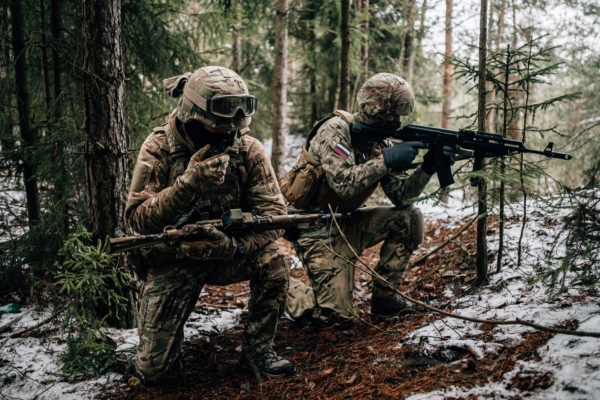Russian Spetsnaz is one of the strongest special forces in the country. However, in the Russia-Ukraine war, their mission to assassinate Ukrainian President Zelensky failed, and they have since participated in multiple battles on the front lines, resulting in significant casualties and difficulties in quickly restoring their combat capability.
According to a report from National Interest, the term “Spetsnaz” can be traced back to before World War I, but it was only after World War II that the Soviet leader Stalin established the first official Spetsnaz unit.
Initially under the Russian Chief Intelligence Office (GRU) and the Federal Security Service (FSB), today there are several Spetsnaz units that provide special forces to the Russian military and law enforcement agencies.
In terms of missions, Spetsnaz units excel in direct action, strategic reconnaissance, and unconventional warfare. They typically have the best weapons and equipment among all branches of the Russian armed forces.
Regarding training, all Spetsnaz units are qualified to use static-line parachuting, but only the most elite units have free-fall parachuting qualifications, allowing them to jump from high altitudes.
The GRU and FSB’s Spetsnaz units are Russia’s most elite and professional forces. These are first-tier special combat units, theoretically comparable to the U.S. Army’s Delta Force and the Navy’s SEAL Team 6.
Since Russia’s invasion of Ukraine, Russian Spetsnaz units have been actively engaged in combat on the front lines. Like other Russian military units, their performance has varied and they have suffered severe losses.
The Russia-Ukraine war is the largest conflict Russia has been involved in since World War II. Therefore, the Kremlin has deployed all available forces into the battle, including elite special forces.
At the onset of the conflict, Russia planned to easily win using Spetsnaz forces. When Russian airborne paratroopers attacked the Hostomel Airport near Kyiv, Spetsnaz assault teams were in pursuit of Zelensky and other Ukrainian officials.
Russia hoped to decapitate Ukraine’s command structure and leadership at a crucial moment in the conflict, but their operation to assassinate Zelensky and the Ukrainian leadership failed.
Despite this, Russia has not stopped utilizing its Spetsnaz forces. Whenever Russian forces encounter strong resistance from Ukrainian troops, Spetsnaz assault teams are deployed to the battlefield, experiencing all major battles.
However, the severe losses suffered by the Russian military have also affected the Spetsnaz units. A member of the U.S. Air National Guard leaked several classified documents, some of which involved assessments of the Russia-Ukraine war by the U.S. Department of Defense, including information on Spetsnaz units.
The Defense Intelligence Agency stated that by late summer 2022, nearly one-fifth of the Spetsnaz brigades involved in the fighting had sustained significant losses. It estimated that out of the 900 soldiers deployed in one Spetsnaz brigade, only 125 remained combat-capable.
In military terms, a unit that loses nearly 90% of its combat capability is considered unable to effectively engage in combat and would be withdrawn from the front lines.
As the Ukrainian forces launched effective counterattacks, the casualties among Russia’s Spetsnaz units continued to rise. One Spetsnaz brigade found itself in a difficult situation during a retreat and had to defend itself in Lyman, with the situation being dire.
The British Broadcasting Corporation (BBC) evaluated in subsequent reports that the Spetsnaz unit had suffered up to 75% casualties.
Despite being able to easily replenish regular forces, the loss of special forces units presents challenges in quickly filling the gaps in combat capabilities.
In the world of U.S. special operations, there are two sayings: “Special operations forces cannot be mass-produced” and “Capable special operations forces cannot be established after an emergency occurs.”
According to leaked classified documents, the U.S. Department of Defense assessed that, based on the casualties among Russian forces more than two years ago, Russia would need up to 10 years to rebuild its special operations capabilities.

